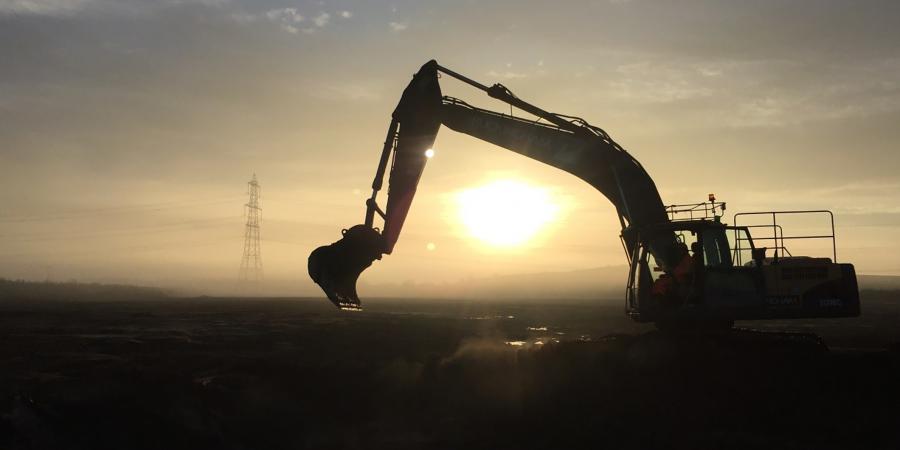At Wessex Archaeology, our staff expertise spans from built heritage to marine archaeology – and everything in between. In our new blog series, we’re opening the doors of the Wessex Archaeology offices and site cabins, offering an insight into the day-to-day lives of our 350 staff members and the high-quality services they enable us to deliver.
Next in the series is Martina Tenzer, an experienced member of the field team since 2013.
A new day, a new dawn and a new site – prepared to expect the unexpected. A watching brief, which has been planned for a while, is now due to start. Archaeologists must be flexible when working on watching briefs of construction sites, as they are only one part of the programme of works in the project management plan.
It is not always possible to carry out fully planned excavations or a ‘strip, map and sample’ programme ahead of a development project. A watching brief is one way that we can ensure that archaeology is identified and preserved in areas where a potential has been determined (through previous investigations or from desk-based assessments) by monitoring ground works during the construction process.
Yesterday I had time to prepare for the task ahead by reading the available documentation and talking to my Project Manager, who gave me additional information and advice. Looking at the specific area through Google Earth’s time scale or analysing the development on historic maps offers an indication of what could be revealed today.
But, as much as I like historic maps, it’s the modern Satnav that guides me easily to my new work place. Every watching brief is different, and sometimes you find yourself in unexpected locations; something that makes this part of the job more exciting.
After an induction and briefing on site, I am ready to monitor the excavator. Communication with the driver is no problem as we are regularly trained in site health and safety and to act as banksman, enabling us to work safely around machinery and communicate through sign language with the drivers in their cabins.
The workers on construction sites are always very interested in my work and want to know how much gold I have found or what has been the best find of my life so far. Not an easy one to answer, as I have found a wide range of interesting features and artefacts during watching briefs, such as a Neolithic flint arrow head, previously unknown remains of a house destroyed during the Civil War, a beautiful complete Roman pot and a waterhole containing evidence of beer brewing during the Romano-British period.
The construction work carries on uninterrupted as long as there is no archaeology. However, as soon as I spot something suspicious I immediately stop the machine to investigate the ground with my trowel. A dark line or ‘blob’ of soil in the natural geology contains pieces of animal bone and pottery – archaeology that needs to be recorded to preserve the information, since the feature in the ground will be destroyed during the completion of the development. That’s why this work is so important. While a group of site workers are watching my hand excavation, the work is paused and the Site Supervisor as well as my manager are informed about the findings. As the only archaeologist on the site, it is my responsibility to decide the appropriate procedures to use in dealing with the archaeology. This includes photographic and context recording, GPS survey, environmental samples and retrieving of artefacts. The work on site can continue once the archaeology is preserved by record.
The data collected on site will then form the basis for the report I am going to write to tell the story of this place, with details eventually uploaded to the Historic Environment Records of the local planning authority (HER) (http://www.heritagegateway.org.uk/gateway) and Archaeology Data Service (ADS) (https://archaeologydataservice.ac.uk) for public consumption. Long after the housing development is finished, this watching brief identifies previously unknown archaeology and preserves the historical information for the future.
Martina Tenzer, Archaeologist
